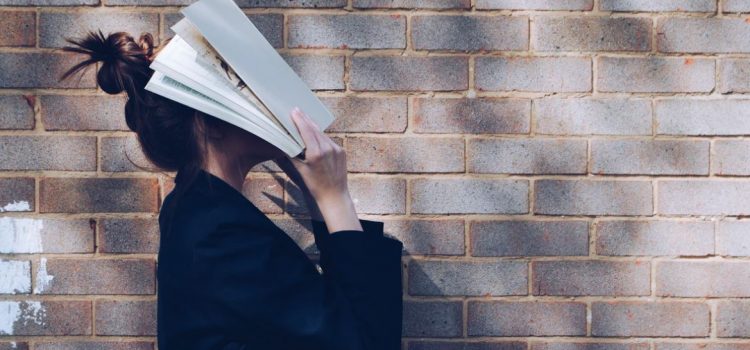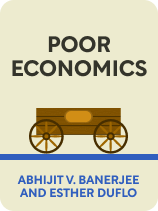

This article is an excerpt from the Shortform book guide to "Poor Economics" by Abhijit V. Banerjee and Esther Duflo. Shortform has the world's best summaries and analyses of books you should be reading.
Like this article? Sign up for a free trial here .
What is Abhijit Banerjee and Esther Duflo’s Poor Economics about? What are the key takeaways to draw from the book?
Poor Economics by Abhijit Banerjee and Esther Duflo sets out to examine the lives of the poor as they actually are. The authors see several key lessons emerging from their analysis of poverty.
Here are four lessons Banerjee and Duflo draw from their analysis.
1. The Poor Need More Information
When it comes to personal or economic decisions, the poor often simply don’t have enough information to make good choices, believe Duflo and Banerjee. To get more information to the poor, it should be delivered in enjoyable formats, such as through song or a funny advertisement, and it should be delivered by sources the poor find credible, like the press or local, trusted people.
(Shortform note: A recent study shows that, in trying to get information to the poor, policymakers should carefully consider the message, the medium, and the messenger. Duflo and a team of researchers conducted a randomized controlled trial in India and the United States to determine the effectiveness of using social media to deliver information directly to the poor. They found that messaging delivered via Facebook worked best when it was presented in simple terms by a celebrity—not by an official appointed as an expert.)
2. The Poor Need Easier Choices
Wealthy people living in wealthy countries have many difficult decisions made for them, which benefits them because they then don’t have the opportunity to make poor decisions, claim Duflo and Banerjee. Their water is purified, their healthcare providers are highly trained and closely regulated, their foods are fortified with key nutrients and regulated to ensure they’re safe, their assets are protected, they have money set aside for the future through Social Security or other financial institutions, and so on.
The poor have none of these things, write the authors. They have to purify their own water, figure out ways to save for the future outside of typical financial institutions, make complicated decisions about their healthcare, and more. Such decisions are difficult for anyone to make, but especially for the poor, who feel the constant pressure of a lack of resources, information, and basic economic security.
Duflo and Banerjee suggest that a practical way to alleviate this pressure is to make these decisions easier for the poor. One way to do this is by ensuring default options are good. If tasty cereals are fortified and made readily available, it’ll be easier for the poor to get critical micronutrients into their diet. Referring to Richard Thaler and Cass Sunstein’s book, Nudge, Banerjee and Duflo propose a second way to make good decisions easier for the poor: Nudge them toward the right choices. For example, savings accounts could be structured to encourage deposits and discourage withdrawals.
3. The Poor Need Innovators and Governments to Build Better Financial Services
Duflo and Banerjee argue that governments, charitable organizations, and private financial groups can and should develop innovative financial services for the poor. Where electronic money transfers have become available, for instance, the poor have more access to funding. Though microcredit financing has its limitations, it has made credit more available to even the poorest people.
In certain situations, the authors believe governments should step in with subsidies or other financial incentives to help provide adequate services to the poor. This applies in cases where free market forces don’t support the development of services the poor need. Health insurance options for the poor, for example, tend to cover only catastrophic events and not preventive care. Duflo and Banerjee argue that in cases like this, the benefits of offering free goods and services—such as bleach or routine check-ups—often outweigh the costs.
| Financial Inclusion Since the Publication of Poor Economics by Abhijit Banerjee and Esther Duflo Financial inclusion is the availability and accessibility of financial services. Recent research has confirmed that increasing financial inclusion significantly reduces poverty rates and income inequality. In the time since the publication of Poor Economics, digital financial services have become more available—1.2 billion adults worldwide gained access to these services between 2011 and 2017. With access to digital technology, people can transition from solely relying on cash transactions to relying on other kinds of financial services. Increasing financial inclusion requires a concerted effort of numerous specialists and regulators to ensure that access is broad and equitable. |
4. The Poor Need Improved Expectations
Expectations can become self-fulfilling, write Duflo and Banerjee. Accordingly, when parents, teachers, politicians, or the poor themselves expect failure, they get failure. However, policymakers can take measures to change expectations. For instance, when women were given leadership roles in rural India both men and women began to see women as potential leaders.
| Affecting the Perception of Women as Leaders in Rural India Banerjee and Duflo are referring to a quota system, established in 1993 in India, that mandated that a third of village council leader positions be reserved for women. Village councils are responsible for many issues related to local infrastructure and program implementation. Researchers studying the effects of this program on the public perception of women as leaders found that, while individuals still preferred leaders of the same gender (men preferred men, for instance), more individuals recognized women as effective leaders, and more individuals voted for women in open elections. Thus, the program indicated that changing expectations may at times simply be a matter of changing policies. |
Duflo and Banerjee argue that giving things away for free can help improve people’s expectations for their own lives. In their view, a change in circumstances for the better tends to give people hope for the future. Renewed hope can change the way people think about the present, which initiates a virtuous cycle.
| Giving Things for Free Improves the Lives of the Poor One program testing the effectiveness of giving things away for free showed significant improvements in the lives of the poor. This Graduation program was implemented in seven countries and included the following components: The gift of a free productive asset, such as a cow. Free technical training to manage that asset. Regular gifts of cash or food support for a few months to a year. Free access to a savings account. Free coaching and regular home visits for accountability. Free health and life-skills training. The results of the Graduation program were clear: Those who received these free things increased their consumption, saved more money, and were healthier and happier even a year after the program ended. What’s more, the long-term financial benefits of the program were one to four times greater than the upfront costs. Programs like this suggest that giving things away for free can have a lasting positive impact on the well-being of the poor. |

———End of Preview———
Like what you just read? Read the rest of the world's best book summary and analysis of Abhijit V. Banerjee and Esther Duflo's "Poor Economics" at Shortform .
Here's what you'll find in our full Poor Economics summary :
- A look at how some people live on less than 99 cents per day
- An analysis of how the poor live and how policy interventions affect their lives
- The four key insights Duflo and Banerjee offer about poverty






